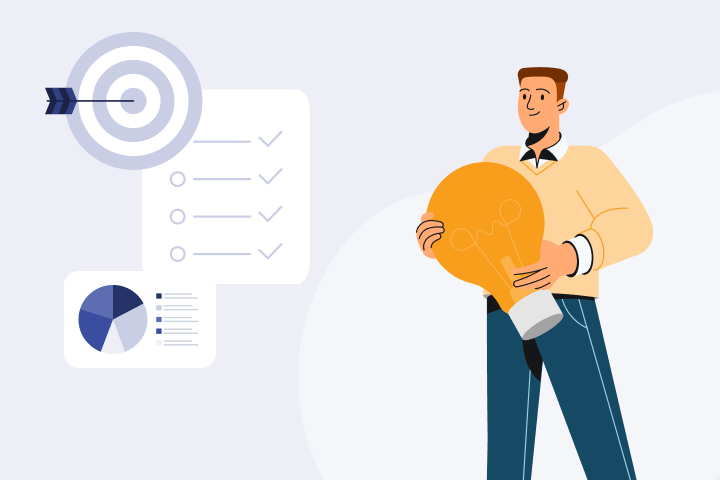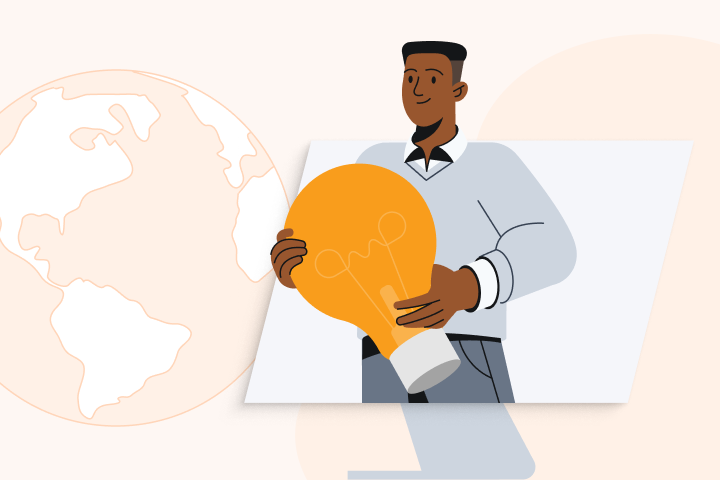The Power of Employee Influence: Why It Outperforms Brand Marketing
There’s a super tool lurking in your marketing toolbox: it’s called employee influencers. Social media posts from employees reach more than 5x further than posts from brands and get reshared 24x more frequently. And when employees share content, it achieves a 200% higher click-through rate than when a company shares it.
People trust other people more than they trust brands or ads. In fact, 73% of people find posts from other people to be more persuasive than posts from brand accounts.
If you aren’t already leveraging your staff as workplace influencers, you should be. Here’s what you need to know.
Why Employee Influence Matters
When employees share their thoughts on social media through an employee advocacy program, your brand’s message is received as more trustworthy and personable. When a person sees an ad, that ad is viewed as having an agenda (e.g., buy my product).
So, naturally, any ad will be met with skepticism. When a person shares a review about a product, service, or brand, it’s viewed as authentic because the messaging is coming from an individual. Here’s where an influencer can help, specifically an employee influencer.
Why You Should Use Employee Influencers
So, why use an employee influencer and not a celebrity influencer (or even a micro-influencer)? While it may be tempting to partner with a prominent influencer to reach a larger audience, there are a couple of drawbacks.
First, working with an influencer can be expensive. Second, it can be risky, too. There’s no guarantee the influencer’s messaging will be in line with your branding, or that they won’t do something controversial and you may have to drop them.
The Benefits of Employee Influencers
Instead, consider implementing employee influencers. Workplace influencers are already on your payroll so there’s no added expense. More importantly, you already know your employees share your brand’s vision and values so there’s little risk of conflict.
Messages are re-shared 24X more frequently when posted by an employee vs. the same message posted by a brand
By leveraging your company’s employees on social channels you will also be:
- Extending your social media reach to gain more brand recognition.
- Boosting your social media KPIs including website traffic and clicks.
- Increasing your conversions.
Sounds like a solid marketing strategy, right? Only one thing… How do you identify those who would make great employee influencers? Let’s take a look at how to identify who has influence in an organization.
How To Identify Who Has Influence in Your Organization
Once you have a clear goal in mind - what you want to accomplish through your influencers - you need to identify the best suitable candidates for that. Not all employee influence on a business is equal and that’s okay. Your job is to find employees who have a strong, influential voice and get them on the employee advocacy wagon.

So, who are they?
These are the people who have already established credibility at the company and enjoy respect from their co-workers. Moreover, they are the people that others come to for advice or any news regarding the company. They can be the manager, the team leader, or any member of the team.
Look for the ones who are:
- Actively engaged in the company’s communications.
- Understand the business and its marketplace.
- Aware of organizational structure.
- Naturally social with colleagues.
- Proactive and encourage others to do the same.
Now let’s examine their employee behavior and motivation.
Employee Behavior and Motivation
To determine what motivates your employees, you need to figure out if they are motivated by intrinsic or extrinsic behaviors.
- Intrinsic Motivated Behaviors: If a person is intrinsically motivated, they are performing a particular behavior because that behavior gives them a sense of personal satisfaction.
- Extrinsic Motivated Behaviors: If a person is extrinsically motivated, they are performing a certain behavior in order to receive something (e.g., promotion, attention, money, etc.)
In this example, would Starbucks employee Angie be considered intrinsically or extrinsically motivated? Her behavior related to this social post could certainly be intrinsically motivated (she’s performing something for personal satisfaction). It could also be considered extrinsically motivated (it’s bringing her positive attention).

Source: Starbucks
But since we’re not Angie’s employer there’s no way to know for sure. That’s why employers need to understand the pyramid of motivation a.k.a. Maslow’s Pyramid. By understanding the pyramid, employers can determine what motivates their employees and identify specific opportunities within their organization to make their employees more effective.

Source: Maslow’s Pyramid
Maslow’s Pyramid comprises five levels: highly engaged (first level), engaged (second level), almost engaged (third level), not engaged (fourth level), and disengaged (fifth level). Ideally, you want your employee influencers to fall within the top two levels (highly engaged and engaged).
Now that you know how to identify your employee influencers and what motivates them, let’s dive deeper into how to influence employees’ behavior so you can get better results in performance, motivation, and revenue.
How To Get Better Influence From Employees
In order to make the most out of your workplace influencers, first you have to provide a thriving working environment. Taking care of your employees is what influences the behavior of employees and gives confidence to the strategic teams in the long run.
Here’s what you can do to bring out the best in your employee influencers.
Acknowledge Your Employees’ Work
Nobody wants to make an effort if their work isn’t appreciated. To keep your employees (especially influencers) motivated and happy, don’t forget to acknowledge their hard work.
When they feel appreciated, they not only perform better, but they try to outperform themselves and work even harder. Show them how much you value their work, and they will pay you back with loyalty, harder work, and encouraging others to work harder, too.
Provide a Positive Work Environment and Well-being

Did you know that employee disengagement influences productivity? According to Gallup, disengaged employees cost $7.8 trillion lost in productivity. And employees become disengaged when there’s negativity and a lack of support. Moreover, only 17% of employees feel supported by their employer when it comes to wellness at work.
Make sure you show your employees that their well-being is your priority, and they will feel heard, supported, and motivated to take on their influencer tasks.
Be Clear on What You Expect From Them
Don’t keep them in the dark - always be clear on what you expect from them. Employees feel more secure about their performance when they know exactly what they should do.
Inform them regularly about any company changes and employee influence policy. Then allow them to express their opinions freely and work together toward the final goal. The clearer the expectations, the better the performance.
Offer Training and Further Development
To get the best out of your influencers, offer to include them in an employee influencer program. This way it will be easier for you to set the goals for them while you’re keeping track of employee behavior and motivation on a regular basis.
For example, GaggleAMP as a platform was designed to boost the distribution of communication at the workplace and messaging on social media. It’s super easy for your workplace influencers to share messages created by the company and even contribute their own content. This will help with their development as thought leaders in their niche while increasing the company’s social selling.
Include Your Employee Influencers in Your Marketing Strategies
Brands would be remiss not to include employee influence in their marketing strategies. As we discussed, employee influencers have the power to positively influence your business, customers, prospective clients and partners, and revenue.
By identifying who has influence in your organization, examining employee behavior and motivation to better influence employees, and including your employee influencers in your marketing strategies, your company will have an advantage over other brands.
A great way you can encourage your employees to promote themselves (and your brand) on social media is with an employee advocacy program like GaggleAMP. For more info, book a call with us today.











